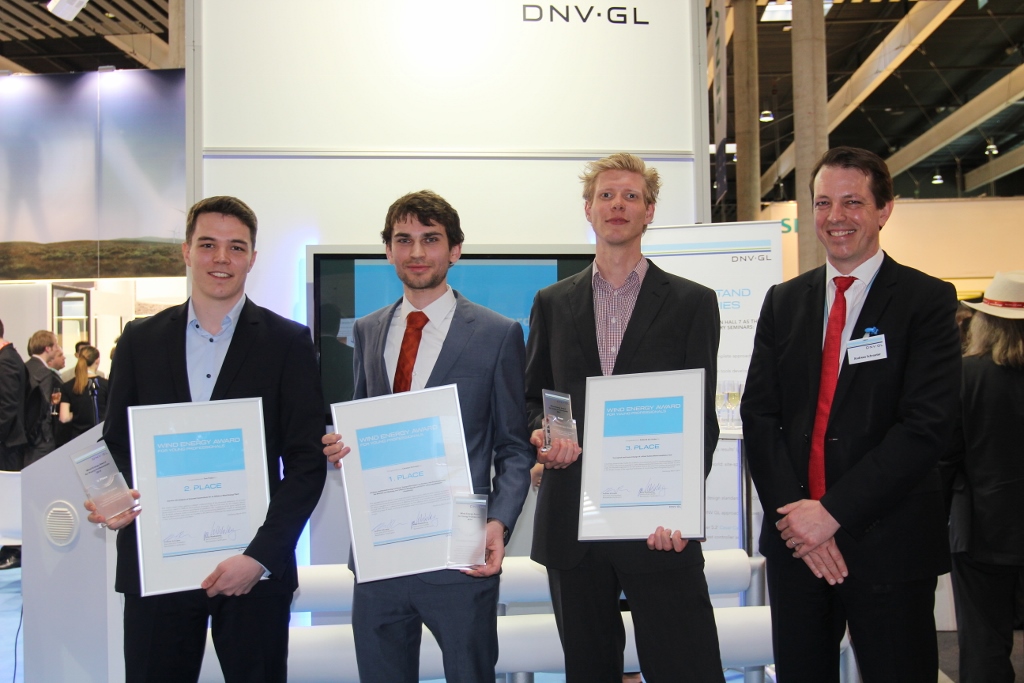DNV GL recently announced the winners of its 3rd Annual Wind Energy Award at EWEA 2014 in Barcelona. Themed “Innovative ideas for wind energy,” DNV GL’s award recognizes and rewards young industry professionals’ forward-looking concepts and creative ideas for new technical approaches to research and development within the wind industry.

(From left to right) Tom Probst (second place), Christian Hermann (first place), Roderick den Ouden (third place), Executive Vice President of Renewable Certification Andreas Schröter.
As the offshore wind industry continues to pick up pace, finding qualified experts with the required technical and practical knowledge is becoming increasingly challenging. Promoting young talent to pursue a career in the wind energy sector is crucial to ensuring future innovation and the sustained technical progress of the industry.
“Having reviewed the award entries this year I’m filled with confidence that the next generation of wind energy engineers will more than live up to that challenge,” says Andreas Schröter, executive vice president of Renewable Certification at DNV GL. “The number and quality of entries demonstrated an outstanding breadth of creativity, adding real value to concrete challenges the wind energy is facing.”
Schröter presented the €5000 first place prize to Christian Hermann for his paper on ‘Analysis and modelling of maritime transport concepts for route and mission planning of operational and maintenance of offshore wind parks and its software technical implementation.’
“Christian Hermann’s paper offered compelling problem-solving approaches to key objectives in the current offshore wind industry, making a valuable contribution to the reduction of CO2 emissions and reducing the risk of lives within operation and maintenance of offshore wind parks,” he says. “By developing a software tool for the offshore wind industry, the paper provided an innovative and practice-oriented method that demonstrated an outstanding level of detail, covering all means and aspects of transportation, transfer, and access.”
Second place was awarded to Tom Probst’s for his paper on ‘Service life analysis of grouted connections for an offshore wind energy plant.’ His master thesis provides insight into the structural behavior of grouted connections used for offshore wind turbine structures, a very topical subject due to current challenges related to some offshore wind farms in operation. The modelling of the grout material with the ATHENA software under consideration of the post-cracking behavior is a sophisticated analysis and, further to the technical challenge, the results are presented in a clear and precise way in the thesis.
Roderick den Ouden took home third place for his work on ‘Conceptual and control design of a wind turbine blade installation tool.’ In his thesis, den Ouden studied an innovative technique for installing blades on offshore wind turbines, which has the potential to make offshore wind park construction more flexible and less costly. His high-quality theoretical approach adds recognizable value to the design process of the regarded mechanism, making it a convincing piece of engineering work.
The feasibility, economic benefit, and original quality of all three papers were highly commended.
DNV GL
www.dnvgl.com
Filed Under: Events, Innovators & influencers, News




